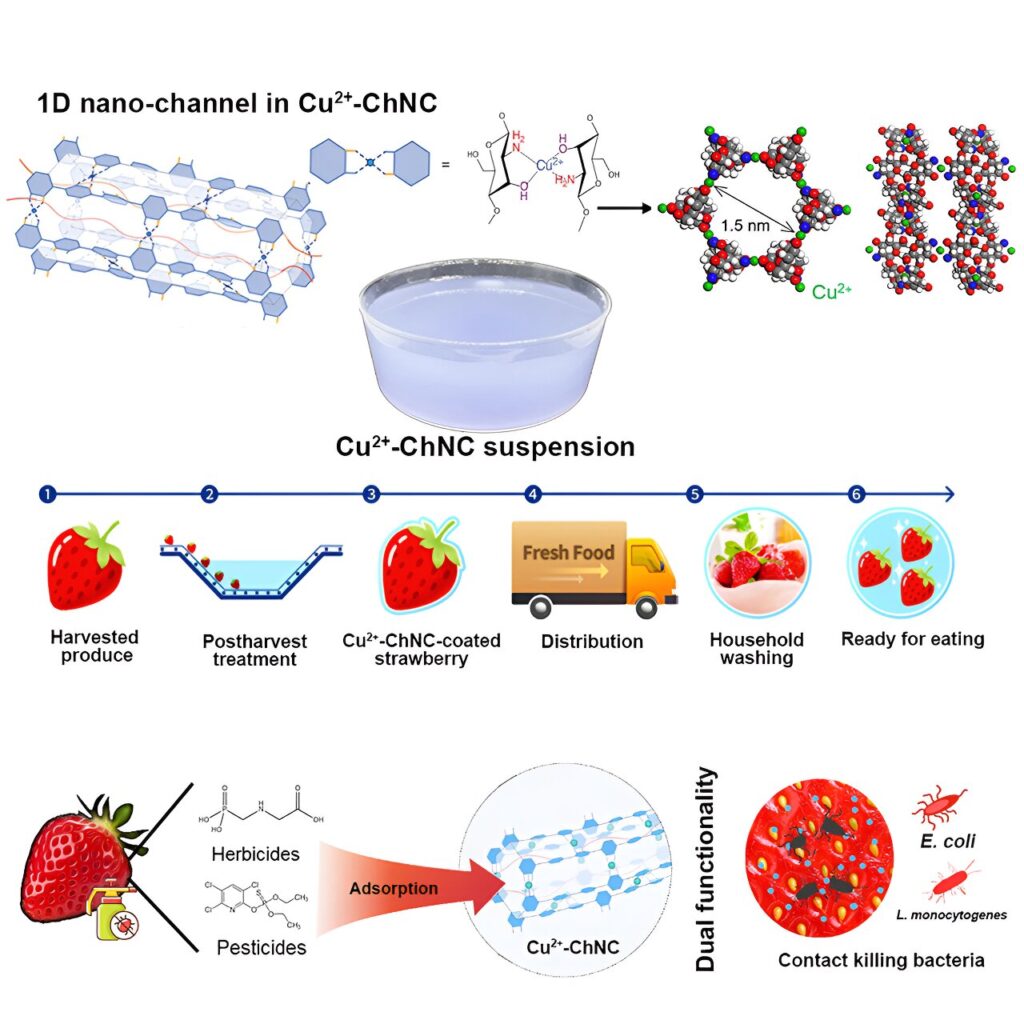Crab shells might just have another role besides fodder for the compost bin. University of Maryland researchers have engineered a seafood-waste material that removes chemical pesticides and herbicides from produce and extends shelf life, a discovery that could have widespread applications in preserving agricultural harvests.
The new technology, made of a derivative of crab and shrimp shells, is designed to form a microscopically thin nanocrystal layer on the treated produce, removing chemical residues. The work, published in the journal Matter, was a collaboration among researchers in the Departments of Materials Science and Engineering (MSE) and Nutrition Food and Science (NFSC).
“This work offers a viable solution to improve food safety associated with our daily life,” said Qin Wang, a professor in nutrition and food science and collaborator in the study.
Pesticide residues on fruits and vegetables have been linked to severe health problems, including increased risks of cancer, attention-deficit hyperactivity disorder and Alzheimer’s disease.
Common household cleaners, ranging from vinegar and soda solutions to more costly alternatives like hydrogen peroxide and ozone, are widely used to remove pesticides and herbicides, but they are either ineffective or damage the produce’s appearance and taste. The washing process itself may also shorten the shelf life due to “micro-wounds” like bruises formed on the fruits’ surface.
To address this issue, researchers developed a new type of porous material made of chitosan (abundantly present in shellfish waste) and copper, which has antimicrobial properties, and sprayed a thin layer on strawberries.
The researchers employed a smartphone app that consumers could use at home to check the chemical residue level, which found this new material was effective in absorbing them; the coating also enhanced the fruit’s shelf life and was easily rinsed off.
Consisting only of materials and chemicals that are Generally Recognized as Safe (GRAS), a designation established by the U.S. Food and Drug Administration, the technology is also highly scalable.


